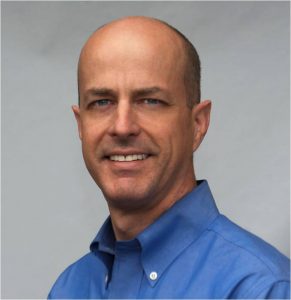SVG Sit-Down: AIMS’s Mike Cronk on IP Successes and Challenges
Key to moving broadcast to an IP environment is interoperability
Story Highlights
Like many technology-based entities, AIMS — the industry consortium pursuing an open-standards approach that moves broadcast and media companies from legacy systems into a virtualized, IP-based environment — measures its progress not in terms of time but by decimal points after a key alphanumeric. In this case, it’s SMPTE ST 2110, the Professional Media Over Managed IP Networks suite of standards aimed at creating one common Internet Protocol (IP)-based mechanism for the professional-media industries, for which sub-protocols have been developed for such issues as addressing system concerns and uncompressed video and audio (SMPTE ST 2110-10/-20/-30) and specifying traffic shaping and delivery timing of uncompressed video (SMPTE ST 2110-21).

AIMS Chairman Mike Cronk: “[At NAB 2019,] AIMS, working through vendor booths, is doing a lot of cross-vendor interoperability demonstrations.”
What has changed for AIMS and its mission recently?
A little and a lot. AIMS’s purpose is still to foster the adoption of a common set of protocols and open specifications in the broadcast and media entertainment sectors. SMPTE 2110 is coming up on two years, and we’re really making some great progress.
What we are doing this year at NAB is raising the bar. ST 2110 is a transport standard, but there are other levels of the protocol, such as for connection and discovery and for network security. These need to be added in a common way so that vendors across the industry can interoperate and so that broadcasters have the power of choice. The [IP Showcase] Future Zone, one of the four main areas that we’ll have at the NAB Show, is targeted at those protocols, to raise the bar in that area. That’s the next big step.
What has been key to getting the industry to cooperate to the extent it has?
Transparency. We’re working to give broadcasters more transparency as to how each product works with 2110, in the context of the Joint Taskforce on Networked Media. That’s a consortium of AMWA, EBU, SMPTE, and VSF. They’ve developed a program called JT-NM Tested, and we had an event last week in the Houston area at the Fox facility in The Woodlands, where a lot of vendors had many products tested around how they compare to the 2110 spec. The test results are going to be made public, by vendor and by product, for those that opt into that. It gives vendors a chance to look at their products and interoperability in a more open way than ever before.
It’s the first time we’ve done this. It’s not a certification process, but it will provide deeper insight into how products work with 2110, and then [there can be] discussions about details like operating points and things like that that are helpful in putting together a system. It’s the first time we’re doing this; it’s not a formal certification, but it is a very thorough and detailed test.
One of the things we’ll be doing is publishing the test plan along with the test results so everyone can see what the test was, what equipment was used, and what the results were.
AIMS has built quite a bit around the 2110 specifications. What else is planned?
AIMS is also pushing to make known the various installations around the industry, such as broadcast, where 2110 has been implemented. And there will be a wall at the IP Showcase where people can see the various benefits of that. In addition, AIMS, working through vendor booths, is doing a lot of cross-vendor interoperability demonstrations. We’ll have a catalog of what those are and what people can see. Again, it’s about fostering interoperability.
What’s still to be done?
AIMS been around close to 3½ years now, and we’ve had a lot of success and over 100 members. It was about getting behind the specs around 2110, and much of that has been completed. But there are going to be other specs, around simplicity and security and ease of connectivity. And we’re also working on other developments around transparency of how devices interoperate. It’s all for fostering adoption of this type of technology, which the industry needs and is a stepping stone to the industry of the future.
What’s the biggest challenge that broadcasters face around the shift to IP?
There have been hundreds of IP systems put together across the world, but the biggest challenge is, [doing so] requires a lot of system integration and planning. Once we achieve specifications that allow you to auto-discover and keep devices and networks safe, it’ll make the job of system integration a lot easier. Reducing complexity to make it [IP] more attractive is one of the areas we’re focusing on for the future.
